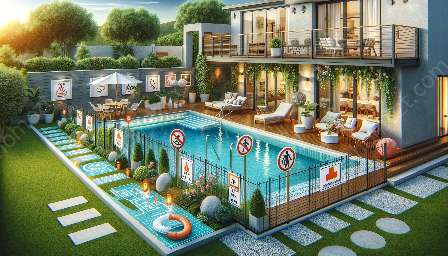When it comes to constructing, maintaining, and operating pools and spas, understanding the drainage and plumbing regulations is essential. These regulations ensure the safety of users and the proper functioning of aquatic facilities. In this comprehensive guide, we will delve into the requirements and standards of drainage and plumbing regulations, as well as their compatibility with pool and spa regulations.
Importance of Drainage and Plumbing Regulations
Drainage and plumbing systems play a crucial role in the proper functioning of pools and spas. They are responsible for water circulation, filtration, and maintaining water quality. Compliance with regulations ensures that these systems are designed, installed, and maintained to prevent health risks and environmental impact.
Key Requirements for Drainage and Plumbing Regulations
Drainage and plumbing regulations encompass various aspects that are critical for the safe operation of pools and spas. Some of the key requirements include:
- Sanitary Design: Regulations dictate the sanitary design of drainage and plumbing systems to prevent contamination and ensure the safety of users.
- Water Circulation: Requirements address the efficiency and adequacy of water circulation systems to maintain water quality and prevent stagnation.
- Backflow Prevention: Regulations emphasize the installation of backflow prevention devices to protect the water supply from contamination.
- Emergency Drainage: Provisions for emergency drainage systems and outlets are included to address water overflow and prevent hazards.
- Material Standards: Specifications for the materials used in drainage and plumbing systems, ensuring durability and compatibility with aquatic environments.
Compatibility with Pool and Spa Regulations
Drainage and plumbing regulations are closely related to pool and spa regulations, as they collectively govern the safety and operational aspects of aquatic facilities. Pool and spa regulations address additional requirements such as water quality standards, lifeguard certifications, and facility maintenance protocols. It is essential to ensure that drainage and plumbing systems comply with both sets of regulations to maintain a safe and compliant aquatic facility.
Regulatory Compliance and Maintenance
Maintaining compliance with drainage and plumbing regulations involves regular inspections, maintenance, and record-keeping. Facilities must adhere to regulatory inspections and keep accurate records of maintenance activities to ensure ongoing compliance. It is crucial to stay informed about any updates or changes in regulations to make necessary adjustments and uphold compliance.
Conclusion
Understanding drainage and plumbing regulations is paramount for the successful operation of pools and spas. By adhering to these regulations, facility operators can ensure the safety of users, maintain water quality, and prevent environmental impact. Additionally, compatibility with pool and spa regulations further enriches the overall compliance and operation of aquatic facilities.


